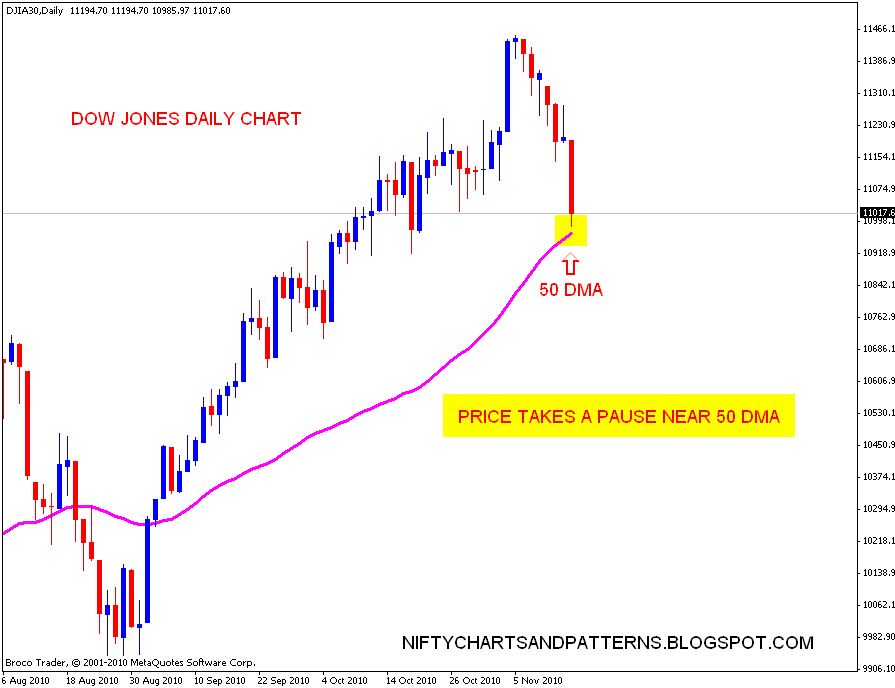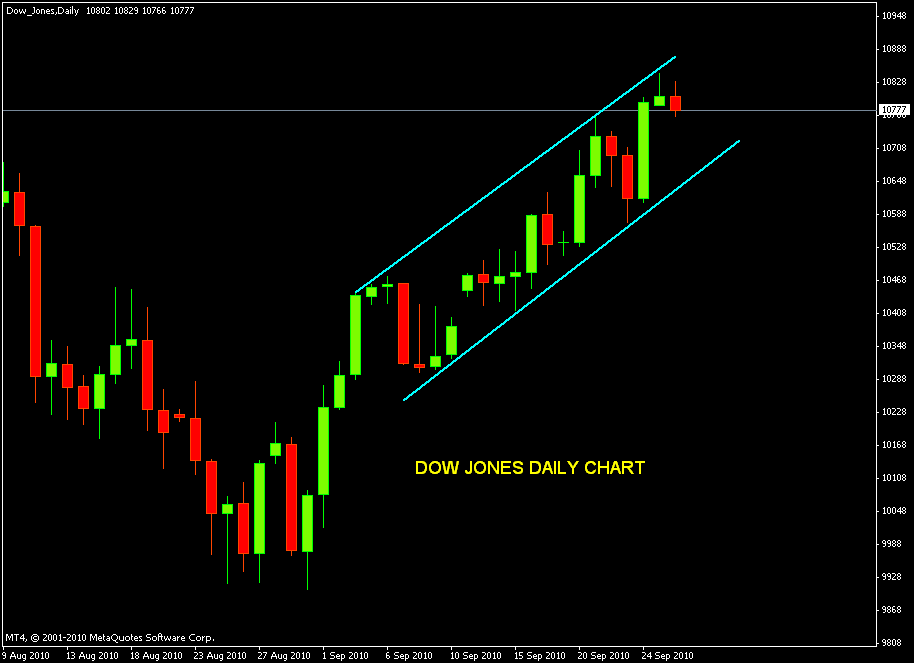Understanding The Dow Daily Chart: A Comprehensive Guide
The Dow Daily Chart is an essential tool for investors and traders seeking to analyze the performance of the Dow Jones Industrial Average (DJIA). This chart provides insights into market trends, patterns, and potential future movements based on historical data. In this article, we will delve deep into the intricacies of the Dow Daily Chart, explore its significance, and equip you with the knowledge to utilize it effectively. Understanding how to read and interpret this chart can enhance your trading strategies and investment decisions.
As we navigate through the various components and analyses of the Dow Daily Chart, we will also touch on important concepts such as technical indicators, market sentiment, and key resistance and support levels. By the end of this article, you will have a thorough understanding of how to leverage the Dow Daily Chart in your financial endeavors.
Investing in the stock market can be daunting, but with the right tools and knowledge, it becomes a more manageable task. The Dow Daily Chart serves as a roadmap, guiding traders and investors through the complexities of market fluctuations. Let’s embark on this journey to master the Dow Daily Chart.
Table of Contents
- What is the Dow Daily Chart?
- Importance of the Dow Daily Chart
- How to Read the Dow Daily Chart
- Key Indicators on the Dow Daily Chart
- Trading Strategies Using the Dow Daily Chart
- Understanding Market Sentiment
- Common Mistakes to Avoid
- Conclusion
What is the Dow Daily Chart?
The Dow Daily Chart is a visual representation of the daily performance of the Dow Jones Industrial Average (DJIA). It displays the closing prices of the index over a specific period, typically ranging from days to months. This chart is instrumental in identifying trends, patterns, and potential reversal points in the market.
Key Features of the Dow Daily Chart
- Time Frame: The chart usually covers daily data points, providing a clear view of market movements.
- Price Action: Displays the opening, closing, high, and low prices for each trading day.
- Volume: Often includes volume bars to indicate the number of shares traded during a specific period.
Importance of the Dow Daily Chart
Understanding the Dow Daily Chart is crucial for several reasons:
- Trend Identification: The chart helps investors identify whether the market is in an uptrend, downtrend, or sideways movement.
- Timing Trades: By analyzing the chart, traders can determine optimal entry and exit points for their trades.
- Risk Management: It aids in setting stop-loss orders and managing risk effectively.
How to Read the Dow Daily Chart
Reading the Dow Daily Chart involves understanding its components and the information they convey. Here are some essential aspects to consider:
Understanding Candlestick Patterns
Candlestick patterns are a fundamental part of the Dow Daily Chart. Each candlestick represents a specific time frame (in this case, one day) and provides information about price movement within that period.
- Green Candlestick: Indicates a closing price higher than the opening price.
- Red Candlestick: Indicates a closing price lower than the opening price.
Identifying Support and Resistance Levels
Support and resistance levels are critical in technical analysis. Support refers to a price level where buying interest is strong enough to overcome selling pressure, while resistance is where selling pressure exceeds buying interest. Identifying these levels on the Dow Daily Chart can guide traders in making informed decisions.
Key Indicators on the Dow Daily Chart
Several technical indicators can be applied to the Dow Daily Chart to enhance analysis:
Moving Averages
Moving averages smooth out price data to identify trends over a specific period. Common types include:
- SMA (Simple Moving Average): Average of closing prices over a specified number of days.
- EMA (Exponential Moving Average): Gives more weight to recent prices, making it more responsive to new information.
Relative Strength Index (RSI)
The RSI is a momentum oscillator that measures the speed and change of price movements. It ranges from 0 to 100 and is typically used to identify overbought or oversold conditions.
Trading Strategies Using the Dow Daily Chart
Effective trading strategies can significantly enhance your chances of success in the market. Here are a few strategies that utilize the Dow Daily Chart:
Trend Following Strategy
This strategy involves identifying and following the prevailing trend. Traders buy in an uptrend and sell in a downtrend, using the Daily Chart to confirm the trend.
Breakout Trading
Breakout trading focuses on entering trades when the price breaks through established support or resistance levels. This strategy can lead to significant profits if executed correctly.
Understanding Market Sentiment
Market sentiment refers to the overall attitude of investors towards a particular security or financial market. It can be bullish (optimistic) or bearish (pessimistic) and is reflected in the movements of the Dow Daily Chart.
Sentiment Indicators
Several indicators can help gauge market sentiment:
- VIX (Volatility Index): Measures market risk and investors' sentiments.
- Put/Call Ratio: Indicates the ratio of put options to call options, reflecting market sentiment.
Common Mistakes to Avoid
When analyzing the Dow Daily Chart, traders often make common mistakes that can lead to losses. Here are some pitfalls to avoid:
Overtrading
Frequent trading based on short-term fluctuations can lead to increased transaction costs and emotional stress. It’s essential to have a well-defined trading plan.
Ignoring Fundamentals
While technical analysis is vital, ignoring fundamental factors that drive market movements can lead to misguided decisions. Always consider economic indicators, earnings reports, and geopolitical events.
Conclusion
In summary, the Dow Daily Chart is a powerful tool for traders and investors alike. By understanding how to read and interpret this chart, you can identify market trends, develop effective trading strategies, and manage your risks effectively. Always remember to combine technical analysis with fundamental insights to make well-informed decisions in your trading journey.
We encourage you to share your thoughts in the comments below, and don't hesitate to explore more articles on our site to deepen your knowledge and enhance your trading skills.
Thank you for reading! We hope this article has provided valuable insights into mastering the Dow Daily Chart, and we look forward to welcoming you back for more informative content.
Unveiling The Best Costco Deals: Your Ultimate Guide To Savings
Understanding Payroll: A Comprehensive Guide To Its Importance And Functionality
Shanaynay: The Rising Star Of Social Media And Entertainment


